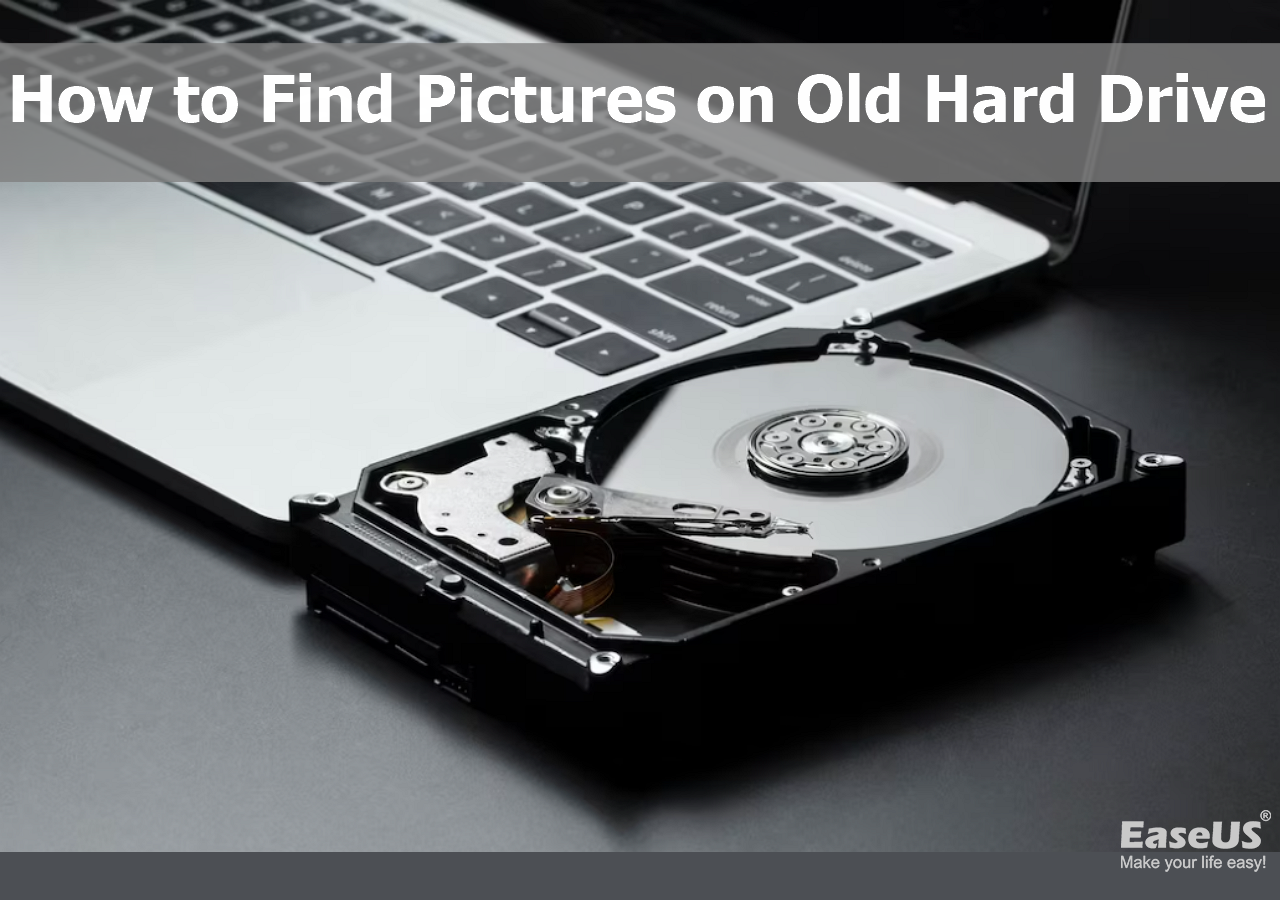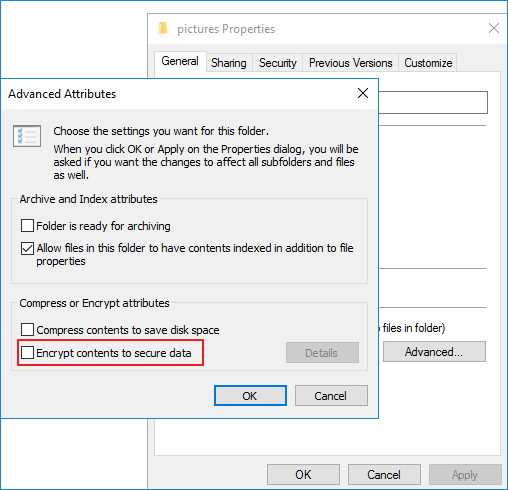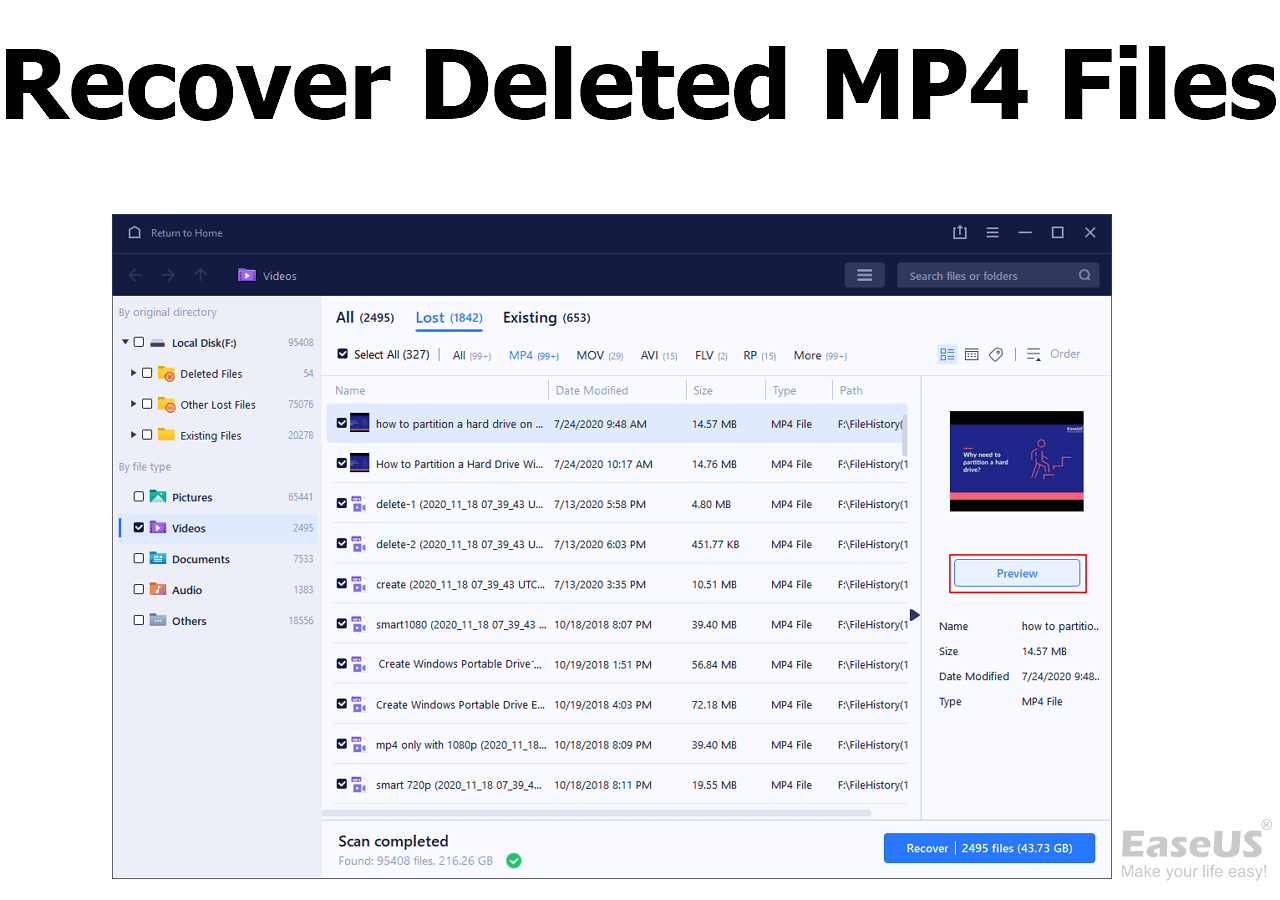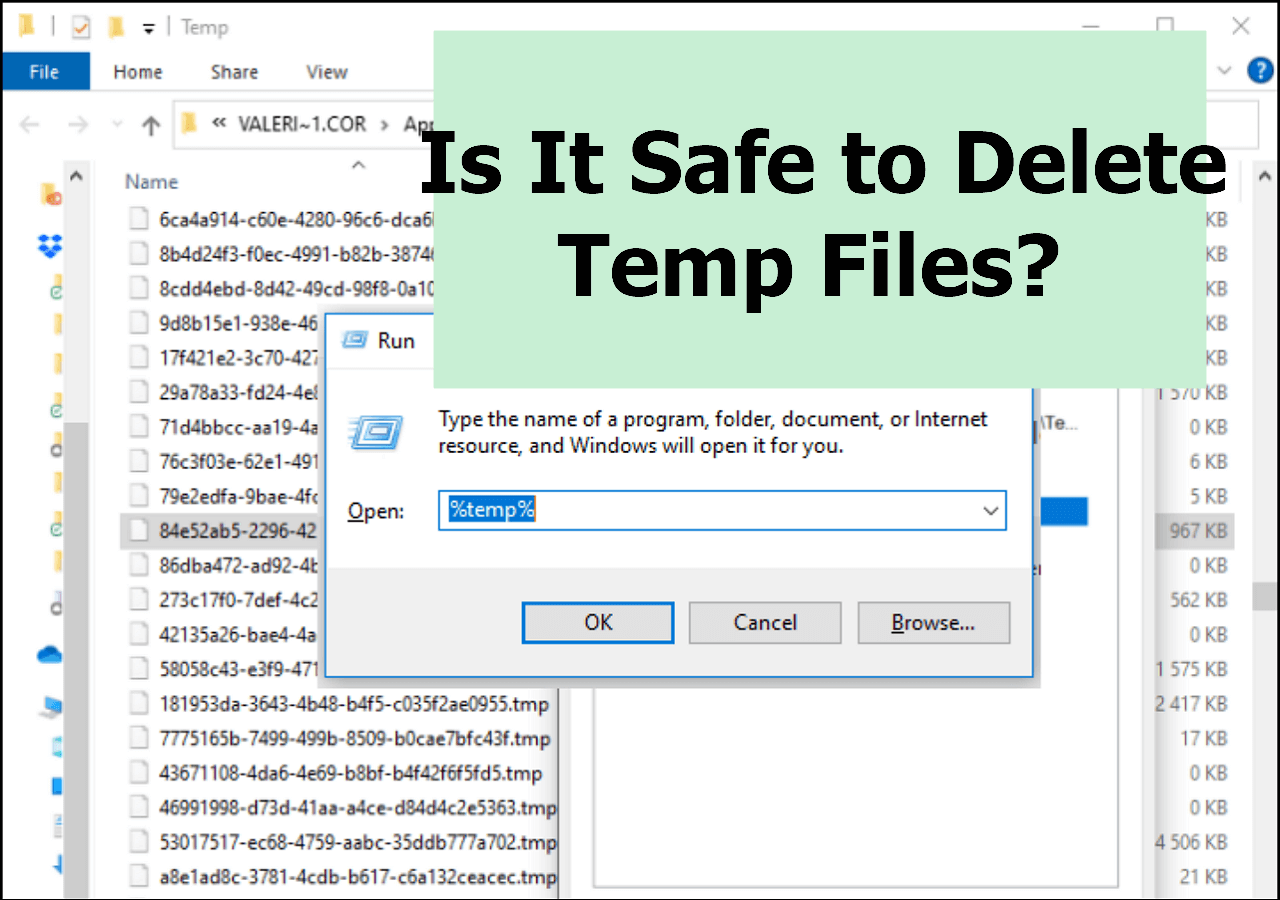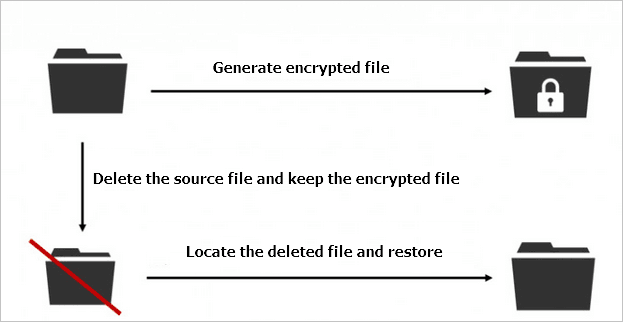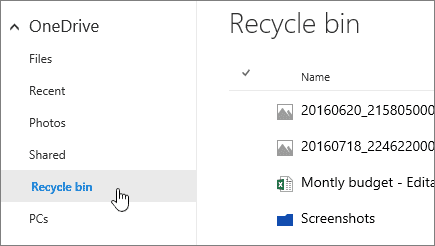-
![]() Get Pictures Off an Old Hard Drive - Recover Pictures from Computer Hard Drive
Get Pictures Off an Old Hard Drive - Recover Pictures from Computer Hard Drive December 12,2025
December 12,2025 6 min read
6 min read -
![]()
-
![]() Files Automatically Encrypted, How to Remove Encryption from Files
Files Automatically Encrypted, How to Remove Encryption from Files December 12,2025
December 12,2025 6 min read
6 min read -
![]()
-
![]()
-
![]() ISO Recovery: Recover Deleted ISO Files with ISO Recovery Software
ISO Recovery: Recover Deleted ISO Files with ISO Recovery Software December 12,2025
December 12,2025 6 min read
6 min read -
![]() How to Recover Deleted MP4 Files on Windows 10/11 [Ultimate Guide]
How to Recover Deleted MP4 Files on Windows 10/11 [Ultimate Guide] December 12,2025
December 12,2025 6 min read
6 min read -
![]()
-
![]()
-
![]() How to Recover Permanently Deleted Files from OneDrive [Easy]
How to Recover Permanently Deleted Files from OneDrive [Easy] December 12,2025
December 12,2025 6 min read
6 min read
Page Table of Contents
PAGE CONTENT:
Are you a video designer? If so, you must know the significance of generating top-notch animations! However, working with intricate projects in After Effects leads to sluggish rendering times and poor performance, where clearing the After Effects cache becomes vital. In Adobe After Effects, a disk cache is a temporary storage area on your PC's HDD.
They can preserve audio, rendered frames, and other essential files while preparing your compositions. If your After Effects playback becomes slow, or if you're having display or disk space errors, clearing the cache is crucial! Then, how to clear cache in After Effects? Below are some of the best ways to clear cache in After Effects. Let's get started!
How to Clear Cache in After Effects
Being a temporary storage location for different elements of your project, After Effects contains audio samples, previews, and image files. The cache in After Effects gradually gets fragmented and bloated, leading to reduced performance and a messy workspace. Therefore, clearing the cache daily can liberate precious disk space, bolstering playback and rendering speeds, and steer clear of potential bugs or errors. Below are the steps to clear the cache via a keyboard shortcut:
Step 1. Launch your After Effects project.
Step 2. For Windows, Hit Ctrl + Alt + / (on the numeric keypad) and Command + Option + / (on the numeric keypad). For Mac, hit Command Optionon +/(on the numeric keypad).
The steps to clear the cache via the purge method are the following:
Step 1. Hit "Edit" > "Purge" > "All Memory & Disk Cache…"

Step 2. Hit "OK" once you are prompted with a confirmation dialog box.
After Effects will now start eliminating the cache, which might take a few minutes based on how much data you require to clear. Once you notice the "Purge" menu, you will have the option to clear the "Disk Cache" and "Memory" isolately. So, what's the difference?
- Put, "Memory" lies in your RAM and contains every rendered preview in your recent project. This automatically eliminates the caches every time you shut down After Effects.
- The "Disk Cache" will protect previews to a particular location on your HDD, and such files will be stored on your HDD even if you shut it down.
The steps to clear the cache via the Preferences window are the following:
Step 1. Launch your "After Effects" project.
Step 2. Navigate to "After Effects" on Mac or "Edit" on Windows > "Preferences" > "Media and Disk cache…"
Step 3. Hit "Empty Disk Cache" in the window and opt for "Clean Database and Cache."
Step 4. You may alter the cache size here easily.

The steps to clear the cache manually are the following:
Step 1. Move to the folder "HD/Users/Library/Caches/Adobe/After Effects" and delete the files.
Did you find these methods helpful? If so, kindly share the steps with your friends on social media.
[Bonus Tip] How to Recover Deleted AE Projects Files
Losing After Effects Projects files may hamper your workflow, mainly if that project consists of files for a crucial personal or commercial project. Such data loss scenarios may ensue in several instances, often mistakenly or unanticipatedly, because of crash or corruption. If you have lost AE Project files mistakenly and are wondering how to restore them, don't fret! EaseUS Data Recovery Wizard is extremely handy while restoring permanently deleted data.
It has been on the market for years and can restore your deleted AEP files efficiently with its intuitive interface and straightforward design. It lets users restore files from different storage devices, including non-booting HDDs, memory cards, and external drives. This eminent software effectively restores AE project files due to many situations. The leading features of EaseUS are the following:
- Restore deleted pictures, documents, emails, videos, and other files.
- This tool helps you retrieve 1000+ files from 2000+ storage devices.
- It can restore deleted files from pen drives, external HDDs, video players, memory cards, and music players.
Download this powerful data recovery tool now!
Step 1. Select a folder to scan for lost files
Launch EaseUS Data Recovery Wizard. Double click "Select Folder" to browse the the location where you lost the folder and click "OK" to scan the lost folder.
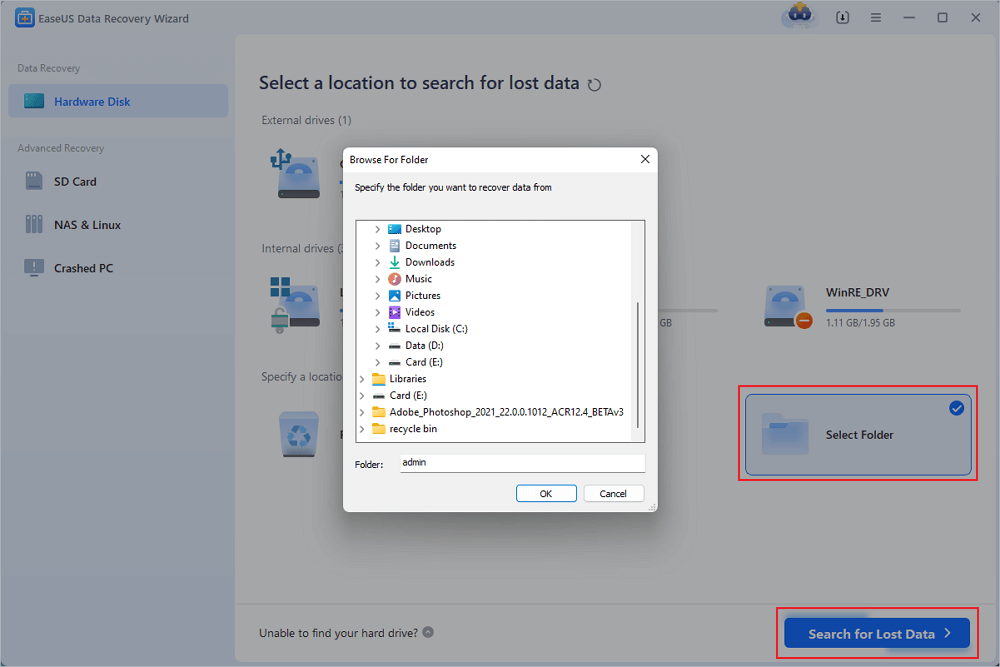
Step 2. Find and preview found files in the lost folder
If you remember the folder name, type the folder name in search box to quickly find the lost files. Then, open the found folder and double-click to preview scanned files. Or you can use the Filter feature to find a certain type of files.
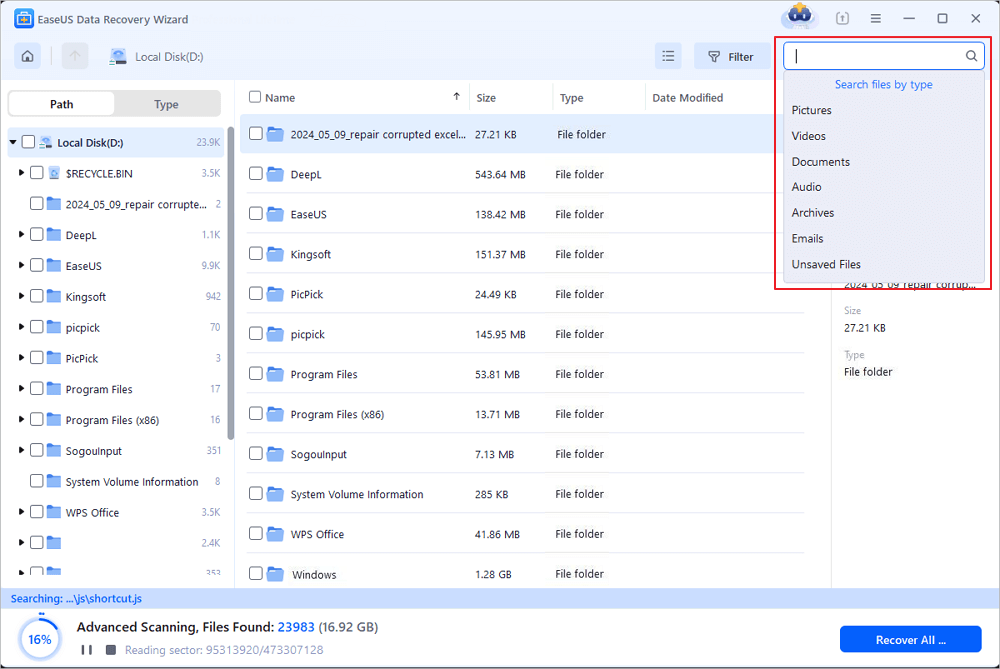
Step 3. Recover and save the lost folder
Last, select the folder and files you need, click "Recover" and choose a new & secure location on your PC or cloud storage like OneDrive, Google Drive, or Dropbox to keep the recovered data.
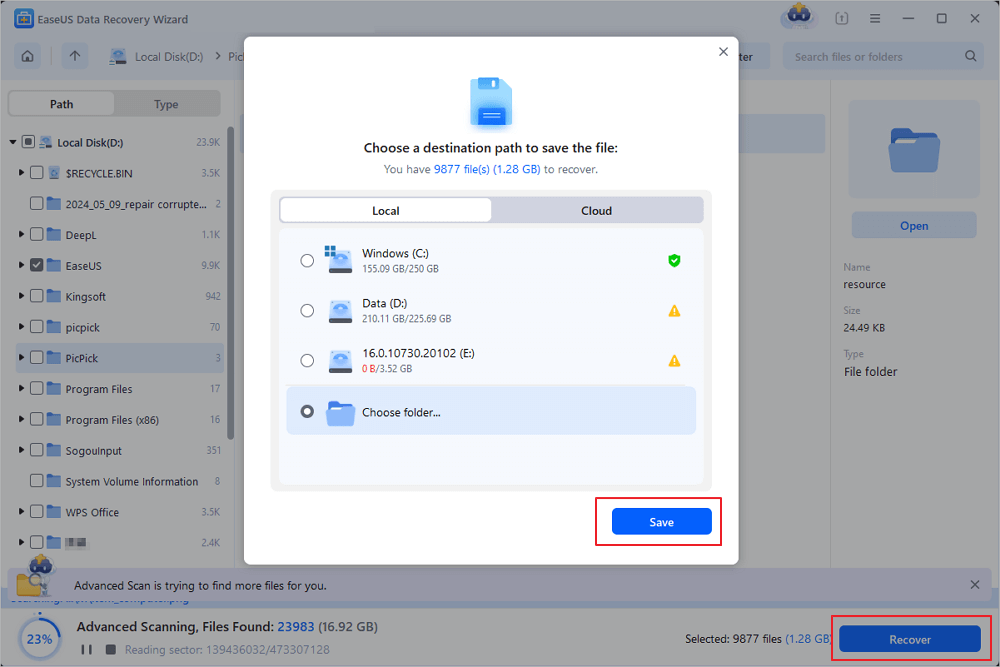
Why Should Clear the Disk Cache in After Effects
Firstly, it's straightforward to liberate space on your HDD. Suppose your HDD is too loaded, and After Effects can't generate fresh previews, which results in sluggish performance. Therefore, this error message can be seen from After Effects: "Your disk cache folder is on a drive that doesn't have sufficient available space." Deleting your disk cache can free up several gigabytes in a jiffy.
Another reason is that sometimes you may observe a layer in the composition that isn't popping up as it should, implying the inefficiency of After Effects. A font might not exhibit correctly in a text layer, the effect isn't working, or a video file appears buggy. Such errors are often caused by After Effects erroneously using an outdated cached file instead of performing a new preview. Fortunately, this can be resolved promptly and effortlessly by clearing the cache once you have done it; after Effects will need to generate fresh previews from the beginning.
How to Recover Unsaved Projects in Premiere Pro on Windows & Mac
Look at this article to learn how to recover unsaved Premiere Pro projects easily. There are two methods: one with recovery software and one without.
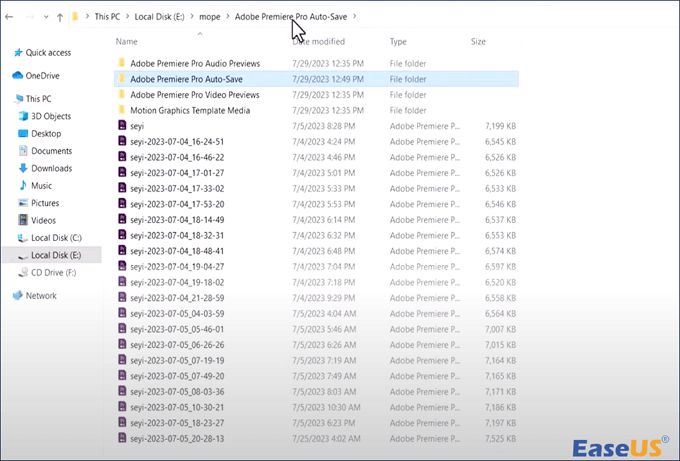
Summary
Knowing how to use disk cache can significantly improve the efficiency of anyone venturing into video editing. After Effects possesses an innovative way of maximizing the editing experience via its disk cache strategy. While assembling a composition, After Effects saves rendered pictures and frames, ensuring hassle-free editing and adjusting of your comp.
Keeping your After Effects cache empty is crucial to maintain quick productivity and minimize performance problems. Try one of these short approaches the next time your After Effects project needs to catch up. Deleting the cache frequently resolves performance troubles. If this eliminates AE project files, you should download EaseUS Data Recovery Wizard!
How to Clear Cache in After Effects FAQs
Go through the FAQs below to understand the process of clearing the cache in After Effects better:
1. Is it safe to delete After Effects cache files?
Deleting After Effects cache files is safe as they are temporary data used to accelerate project rendering and previews. Freeing them up gives you additional storage space and fixes issues such as corrupted cache data. If required, After Effects will regenerate cache files automatically.
2. What is the shortcut for clearing cache in After Effects?
You should apply a hotkey to free up the cache straight from After Effects. Hit Ctrl + Alt + ; (semicolon) for Windows or Command +Optionn + ; (semicolon) for Mac users to launch the Preferences dialog box. Move to the "Media & Disk cache" tab and hit the "Empty Disk Cache" button.
3. Where is the cache in After Effects?
To check the storage space occupied by your disk cache, go to "After Effects" > "Preferences" > "Media & Disk Cache."
4. Does clearing the cache delete projects After Effects?
To put it simply, Memory is everything currently displayed in your project and kept in your RAM. It immediately gets removed each time you shut off After Effects, so it might be wise to clear it while you're there. The Disk Cache will save previews to a particular spot on your hard drive.
Was this page helpful?
-
Jaden is one of the editors of EaseUS, who focuses on topics concerning PCs and Mac data recovery. Jaden is committed to enhancing professional IT knowledge and writing abilities. She is always keen on new and intelligent products.…

20+
Years of experience

160+
Countries and regions

72 Million+
Downloads

4.9 +
Trustpilot Score


Free Data
Recovery Software
Recover data up to 2GB for free!
